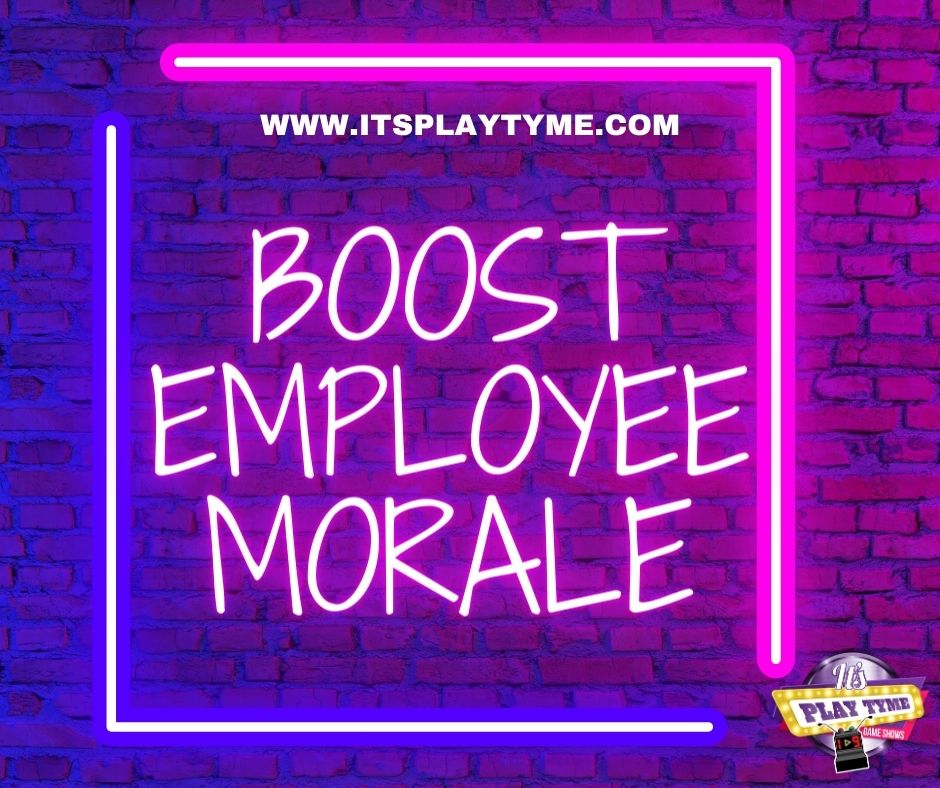From small-scale team gatherings to large, multi-day trade shows and conferences, corporate event planning is a significant part of any organization’s operation.
This step-by-step guide to corporate event planning is worth reading for any event planner looking to execute successful corporate events consistently.
In it, we’ll explore the key elements to consider, provide a handy planning checklist, and delve into the best practices for corporate event management. Get ready.
KEY TAKEAWAYS
Successful corporate event planning involves the following:
- Understanding the type of corporate event you’re organizing
- Clearly defining goals and objectives
- Assembling a competent and diverse planning team
- Creating and following a comprehensive checklist
- Carefully managing the event budget
- Choosing and utilizing appropriate event technology
- Effectively marketing your event
- Proper preparation and logistics for the day of the event
1. Understanding the Type of Corporate Event
Before we delve into the planning process, it’s important to understand the type of corporate event you’re planning. Whether it’s a product launch, client appreciation, training seminar, or a hybrid event that combines virtual and in-person participation, understanding your event type sets the foundation for all subsequent planning decisions.
Corporate event planning can range from internal training sessions and company meetings to large events like trade shows and leadership summits. While different types of corporate events may have distinct planning requirements, many aspects of event planning remain consistent across all types.
2. Establishing Goals and Objectives
Every corporate event should begin with a clear understanding of the event’s goals and objectives. Are you aiming to launch a new product, provide training, or foster camaraderie among clients and employees? By defining these objectives at the outset, you’ll be better equipped to make decisions that align with these goals.
3. Assembling A Competent and Diverse Planning Team
Organizing a corporate event is rarely a one-person job, so assembling a competent and diverse planning team is crucial to the success of the project. A well-rounded team should include individuals with a range of skills, perspectives, and experiences.
2. Identify key stakeholders: Identify the key stakeholders who will be impacted by the project, and consider including them on the planning team. This will help ensure that their perspectives and needs are considered throughout the process.
3. Identify needed skills and expertise: Identify the skills and expertise needed to successfully execute the project. This may include technical skills, project management skills, communication skills, and subject matter expertise.
4. Seek out diverse perspectives – Consider diversity when assembling your team. Seek out individuals from different backgrounds, experiences, and perspectives. This will help ensure that the team can approach the project from a variety of angles and will lead to more creative solutions.
5. Assign roles and responsibilities – Once the team is assembled, assign roles and responsibilities based on each person’s strengths and expertise.
6. Foster collaboration – Finally, encourage collaboration and honest communication among team members. Provide opportunities for team members to work together and learn from one another.By following these steps, you can build a competent and diverse planning team that is equipped to successfully execute your project.
Organizing a corporate event is rarely a one-person job. Depending on the size and complexity of the event, you’ll likely need a team of individuals with varying skills, from budget planning to marketing. The event planner often leads this team, coordinating efforts, and ensuring everyone is on track.
4. Creating a Corporate Event Planning Checklist
Creating a corporate event checklist is a crucial step in organizing a successful event. The checklist should guide the planning team through every stage of the event lifecycle, from initial concept development to the post-event debrief. It acts as a roadmap, helping to structure and ensure nothing is overlooked.
5. Budgeting for Your Corporate Event
Budgeting for a corporate event is an important step in ensuring that the event runs smoothly and meets its objectives. Here are some tips for creating a budget for your corporate event:
2. Identify the objectives – Determine the primary goals of the event and allocate resources accordingly. If the main goal is to impress clients, for instance, then the budget may be weighted toward upscale décor and catering.
3. Prioritize expenses – Categorize expenses into essential and optional items. Essential expenses are those that are necessary for the event to happen, while optional expenses are those that can be reduced or eliminated if necessary.
4. Create a contingency plan – Include a contingency plan in case of unforeseen circumstances, such as a sudden change in the number of attendees or weather-related issues.
5. Work within the budget – Once the budget has been established, stick to it as closely as possible. Track all expenses and adjust as necessary to ensure that costs stay within the allotted budget.
Budgeting for a corporate event requires careful planning and attention to detail. By following these tips, you can create a budget that ensures a successful and memorable event.Event budget planning is another critical aspect of corporate event management. From venue costs and catering expenses to event marketing and technology needs, understanding and managing your event budget is essential for a successful event.
6. Picking the Right Venue
The choice of venue can significantly impact the success of your corporate event. Factors to consider include the location’s accessibility, its capacity, and whether it offers the necessary facilities for your event. Tools such as a venue sourcing tool can help streamline this process.
7. Catering to Attendee Needs
A well-executed event is one that caters to the needs of its attendees. This may include dietary preferences, accessibility needs, or preferences for breakout sessions. Understanding your attendees allows you to create a more personalized and enjoyable experience.
8. Crafting a Stellar Interactive Activity
The backbone of your corporate event may include keynote speakers, breakout sessions, and of course, live interactive entertainment. Carefully planning and executing this part of the event is very important. Whether it’s a product launch, client appreciation, training session, or a different type of corporate event, the program should reflect specific goals and cater to the interests of attendees.
2. Identify your audience – Understanding your audience is crucial. Identify their interests, preferences, and demographics. This will help you tailor the activity to their needs and interests.
3. Choose the format – Based on your objective and audience, choose the format that works best. It can be a quiz, game, poll, survey, or any other interactive format.
4. Develop content – Create content that is engaging, informative, and relevant to your objective. Use visual aids, such as images, videos, or infographics, to make the activity more interactive.
5. Choose the right tools – Select the right tools to create and host your interactive activity. Consider factors like ease of use, cost, and compatibility.
6. Promote the activity – Promote your activity on social media, email campaigns, or any other relevant channels to ensure maximum participation.
9. Choosing the Right Event Technology
In today’s digital age, selecting the right event technology, including event management software and event apps, is a key component of event planning.
The right technology can simplify the planning process, enhance the attendee experience, and provide valuable data to measure event success.
10. Marketing and Promoting Your Corporate Event
Event marketing is essential for driving attendee registration and creating buzz around your corporate event. Whether it’s through social media marketing, email campaigns, or the event website, effective marketing can greatly enhance the success of your event.
In the lead-up to your event, promotion is crucial to ensure strong attendance. Whether it’s through social media, an event website, or direct marketing, you should have a clear strategy for how you’ll promote your event. On the day, ensure all aspects run smoothly, from registration to keynote speeches and entertainment.
11. Post-Event Analysis and Follow-up

Team-building-facilitator
Post-event analysis and follow-up are critical aspects of event management. It involves analyzing the success of an event and can provide valuable insights for future events.
The following are some steps involved in post-event analysis and follow-up:
1. Conduct a debriefing session – This involves bringing the event team together to gather feedback.
2. Collect feedback – Gather feedback from participants, sponsors, vendors, and stakeholders on their experience during the event by sending a survey or conducting interviews.
3. Review budget and financials – Check the return on investment (ROI) and budget to identify opportunities for cost savings and revenue generation.
4. Analyze attendee demographics – Analyze the demographics of attendees and how they interacted with the event to determine target groups and preferences that can be used to improve future events.
5. Evaluate vendor performance: Evaluate the performance of vendors and sponsors and identify those who provided the best value and service.
6. Follow-up with attendees: Send thank-you emails to attendees, and surveys to collect feedback, and update them on future events or promotions.
7. Develop an action plan: Based on the feedback, identify areas that need improvement and create an action plan to implement changes for future events.
Frequently Asked Questions
Q1: How Can I Make Sure Everyone is on the Same Page During the Planning Process?
2. Encourage open communication and actively listen to everyone’s ideas and concerns.
3. Use visual aids, such as charts, diagrams, and presentations to help illustrate key points.
4. Establish clear roles, responsibilities, and timelines for all team members and stakeholders.
5. Schedule regular check-ins and meetings to keep everyone informed and ensure the project is progressing according to plan.
6. Document decisions and progress to ensure everyone has access to the same information.
7. Ensure that all team members have access to the same resources and tools needed.
Communication is key in corporate event planning. Regular meetings with your planning team and stakeholders can ensure everyone is informed and aligned with the event’s goals and objectives. Utilizing event management software can also facilitate coordination and information sharing.
Q2: How Can I Avoid Information Overload for Attendees at a Large Event?
2. Organize Information: – Group information into categories or themes to make it easier for attendees to understand and remember. Use clear headings and bullet points to present information in an organized manner.
3. Provide Accessible Materials – Provide attendees with digital or physical materials that they can refer to at their own pace. These materials should be easy to read and understand, and should not contain too much technical jargon.
4. Use Visual Aids: Use graphics – Diagrams, and other visuals to help attendees understand complex information. Visual aids can help break up text and make information easier to digest.
5. Allow for Breaks: Break up lengthy presentations and information sessions with breaks for attendees to rest, socialize and recharge. This gives attendees time to process the information presented so far and return ready to absorb new information.
6. Engage Attendees: Use interactive activities such as group discussions, quizzes, and games to engage attendees and make learning more fun and memorable. This also helps break up the monotony of long informational sessions.
7. Use Technology: Leverage technology to help attendees prioritize, organize, and remember information. For example, offer a mobile app that allows attendees to take notes and provides reminders about important sessions or events.
Overall, the key is to balance the amount of information provided with attendees’ ability to remember and use that information.
For large events with multiple sessions, providing attendees with a well-organized schedule and an event app can help them navigate the event effectively. Breakout sessions can offer more targeted, relevant content to specific groups, reducing the risk of information overload.
Q3: How Early Should I Start Planning an Event?
The time to plan an event can vary greatly depending on its size, and complexity. A general rule of thumb is to start as early as possible to ensure ample time for preparation.
Q4: What’s the Best Way to Track Event Success?
The best way to track event success is through setting actionable goals and measuring relevant metrics. Define what success means for the event, such as increasing attendance, boosting revenue, or improving brand awareness.
Then, identify key performance indicators (KPIs) that directly relate to these goals, such as registration numbers, ticket sales, social media engagement, or lead generation.
You may want to utilize event management software or tools to track these metrics in real-time or post-event analysis to determine areas of improvement and measure the event’s overall success. Post-event surveys are also an effective way to gather direct feedback from attendees.
It’s important to continuously analyze and adapt your strategies to optimize future events based on this data.
Measuring the success of your event requires setting clear, measurable objectives from the start.
Q5: How Can I Engage Employees in an Internal Event?
2. Get buy-in from management and encourage them to be involved. When leaders show enthusiasm for the event, employees are more likely to participate.
3. Use multiple channels to promote the event, including email, intranet, and social media. Make sure the messaging is clear and consistent.
4. Create a fun and interactive experience. Consider adding elements like team-building exercises, games, or competitions.
5. Incorporate food and drinks. Food is a great way to bring people together, and it also ensures that employees have a reason to attend. Ensure the event’s content is relevant and beneficial to the employees, and provide opportunities for them to contribute and participate actively.
6. Create opportunities for employee feedback and participation. Ask for input on event planning and provide opportunities for employees to actively participate in the event.
7. Provide incentives for attendance, such as raffles or prizes. This can also help generate excitement and encourage participation.
Q6: How Can I Leverage Social Media for Event Marketing?
Social media is a popular, yet powerful tool for event marketing, and there are several ways to leverage it:
1. Create engaging event pages and content on social media platforms like Facebook, LinkedIn, and Twitter. Share event details, photos, and updates to keep your followers engaged.
2. Use specific event hashtags to increase visibility and encourage attendees to share their experiences on social media as well. This can help in spreading the word about the event to a wider audience.
3. Partner with influencers or industry experts to promote the event on social media. They have a large following and can help generate a genuine buzz about the event.
4. Run paid social media ads targeting people who are interested in attending events similar to yours.
5. Connect with industry groups on LinkedIn and post details of your event in relevant groups.
6. Include social media handles or links in all marketing materials to encourage attendees to follow and engage with you on social media.
7. Use live streaming platforms such as Facebook Live, Youtube or Instagram Live to stream the event and reach those who are unable to attend in person.
8. Encourage attendees to post about the event on social media by setting up social media walls or providing incentives for attendees who share their experiences on social media.
Q7: What Are Some Considerations for Hosting a Hybrid Event?
2. Venue – Pick a location that can accommodate both in-person and virtual attendees. Make sure that the venue is accessible to both groups and has adequate infrastructure such as proper lighting, sound, and projection equipment.
3. Communication – ensure you communicate clearly and effectively with both groups before, during, and after the event. Provide detailed instructions on how to access the virtual event platform, how to participate in virtual activities, and how to engage with in-person attendees.
4. Staffing – The need for additional staff to manage the technical aspects is very likely. Make sure you have enough staff on hand to help attendees navigate the technology and troubleshoot any issues.
5. Security – Consider the security concerns that may arise such as data privacy and hacking. Take necessary measures to ensure the safety of all attendees and their personal information.
6. Budget – This type of event can be more expensive than traditional in-person or virtual events due to the additional technology and staffing needs. Make sure you have a clear budget plan in place and consider all the associated costs before hosting the event.
Hybrid events which combine in-person and virtual elements, can reach a wider audience but also present unique challenges. Choose technology that supports both in-person and virtual attendees, and consider how to integrate these audiences for an inclusive experience.
Remember, every event requires a unique approach, tailored to its objectives and audience. By asking the right questions and staying adaptable, you’re well on your way to successful corporate event planning.

boost-staff-morale
Need Help with planning a “Fun” Corporate Event?
If you need help planning a “fun interactive activity” for your next corporate event, look no further.
We travel all over the NYC Metropolitan area, like, New Jersey, Philadelphia, and Connecticut.
We will come to your location, set up with all props, and facilitate activities for your attendees.
Feel free to contact us, as we have a plethora of fun games and challenges to choose from.
We offer free consultation and explain how it works in 3 simple steps. The best part is, no deposit is required upon booking, Let’s Play!









